The Pacific coast of Colombia is often overlooked by tourists visiting Colombia. The relative difficulty of getting to the Pacific coast (the area is only accessible by domestic flights), coupled with the lack of Internet and developed tourist infrastructure, makes many people opt to visit a place like Cartagena on the Caribbean coast or islands such as San Andrés instead. But there are many things to see and do on Colombia’s Pacific coast.
Colombia’s Pacific coast can be considered somewhat wild and mysterious. And it’s also considered rather remote. But for the slightly more adventurous traveler who wants to experience untamed nature and undiscovered beauty that is off the beaten path for most foreign tourists, the Pacific coast can offer some of the best of Colombia.
The Pacific coast region of Colombia is one of the most biodiverse in the world. In addition, the local hospitality is unparalleled. And the beaches are the perfect place to relax and soak up the silence – when the rain stops long enough for you to enjoy them.
From unspoiled beaches to wild jungles and humpback whales, here are our picks for the top 12 things to see and do on the Pacific coast:
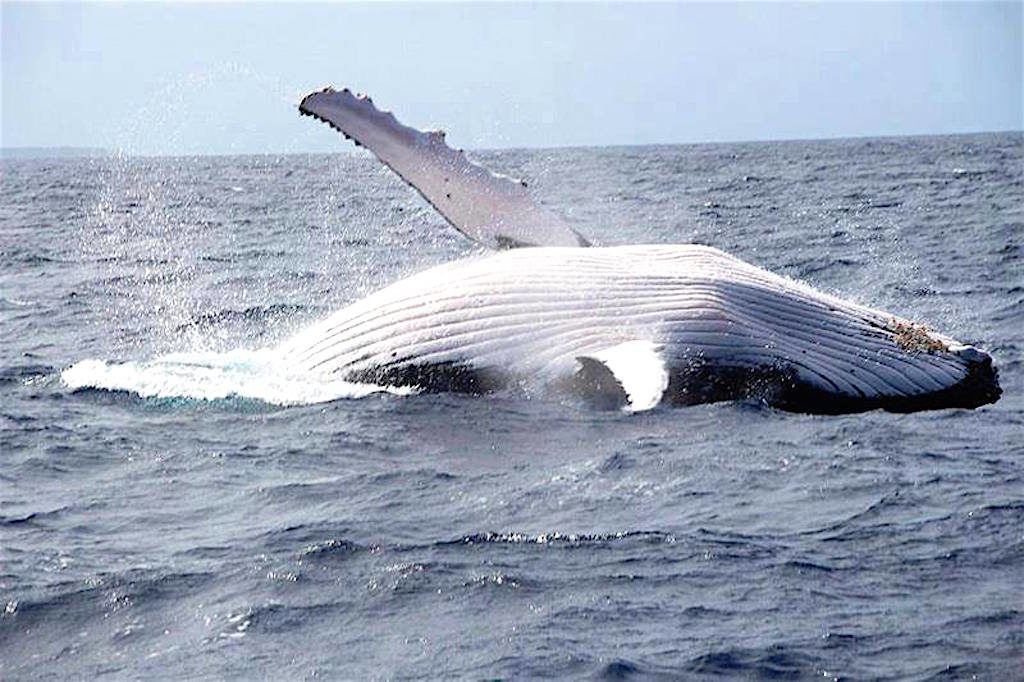
Pacific coast whale watching, photo by Guapi-Tecnologies
1. Pacific Coast – Top Things to Do: Whale Watching
The main reason why most travelers pass through the Pacific coast is to take advantage of a once in a lifetime experience – seeing the majestic humpback whales who make the waters surrounding the Colombian Pacific coast their home, typically from July to November each year.
Tours regularly go from Nuquí, Bahía Solano and El Valle and average about 100,000 pesos per person. Tourism in the Pacific coast operates on a word of mouth basis. So, ask at your hotel or hostel for their top tour recommendations.
There’s nothing quite like seeing these enormous creatures emerging from the water, dwarfing the tiny tourist lanchas (speedboats that are used for transport on the coast), before finally crashing once again into the waves.
This timeframe represents mating season for the whales. So, it’s a time when you can often spot mother whales teaching their young how to breach, and how to clean limpets off their skin. And pods of bottlenose dolphins leaping beside the boats are also a common sighting.

Grey and black sand Pacific coast beach, photo courtesy of Humpback Turtle Hostel
2. Pacific Coast – Top Things to Do: Beach Living
What else would you want to do in a place with no Internet or phone service? You won’t find the white sand beaches of the Caribbean here. But what you will find are untamed, huge stretches of grey and black sand, bordered by the thick jungle, where you can walk for miles and not see a single other soul.
Or, you could just find a hammock in and spend an afternoon listening to the waves and spotting the occasional whale breaching from the shore.

Monkey in the trees above, photo courtesy of Mama Orbe Eco Hostel
3. Pacific Coast – Top Things to Do: Coast Down the Rio Jovi
Cruising down the Rio Jovi, which is a river that can be accessed from Nuquí, is the perfect way to spend an afternoon. From the comfort of your canoe you can spot birds. And you can hear the chattering monkeys in the trees above.
Most tours will take you down the river for an hour and a half before docking at Chontadural waterfall, where you have a chance to feed the fish that reside there.
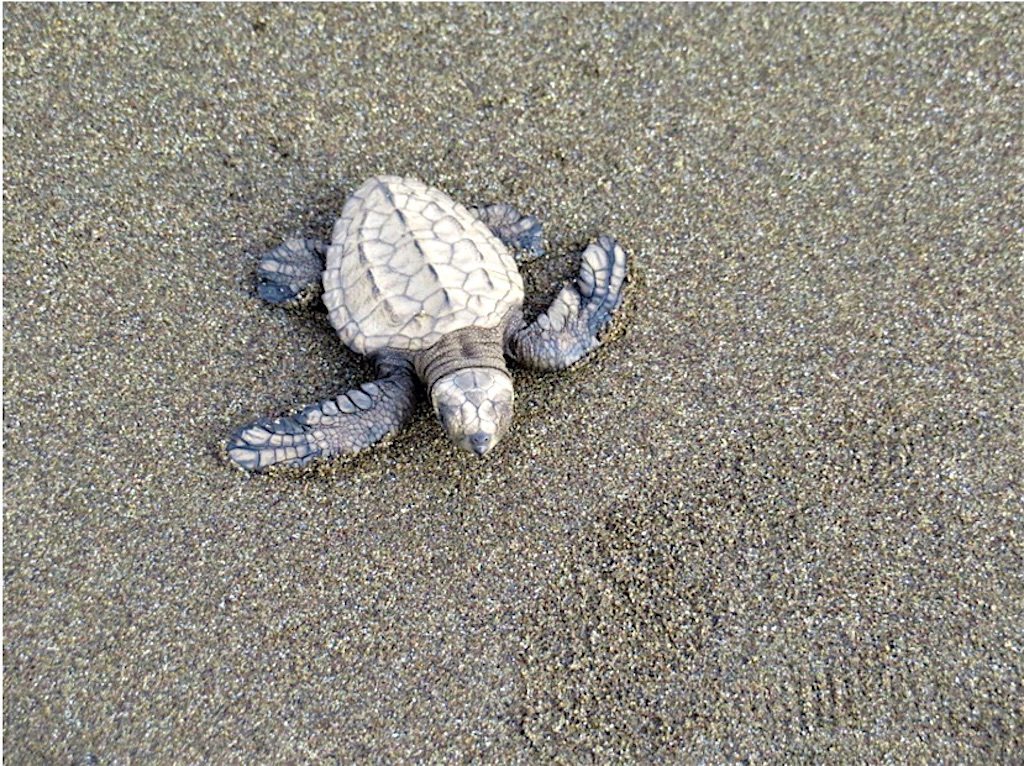
Pacific Turtle, photo by Roisin Mulligan
4. Pacific Coast – Top Things to Do: Releasing Turtles
Mama Orbe Eco Farm lies along a deserted stretch of beach, about three kilometers from the pueblo of El Valle. If you arrive at the right time, and for a small fee, you can help the ongoing volunteer project to conserve one of the region’s most stunning animals, the Pacific Turtle.
Ask for Dario, a local volunteer with extensive knowledge about the area’s flora and fauna. Dario takes the time to scour the beach for turtle eggs and make sure they are safe from the threat of scavengers and negative human influence.
After taking a tour of the eco-farm, where you can see how the eggs are kept and cared for, you have the opportunity to release some newly hatched baby turtles into the sea.
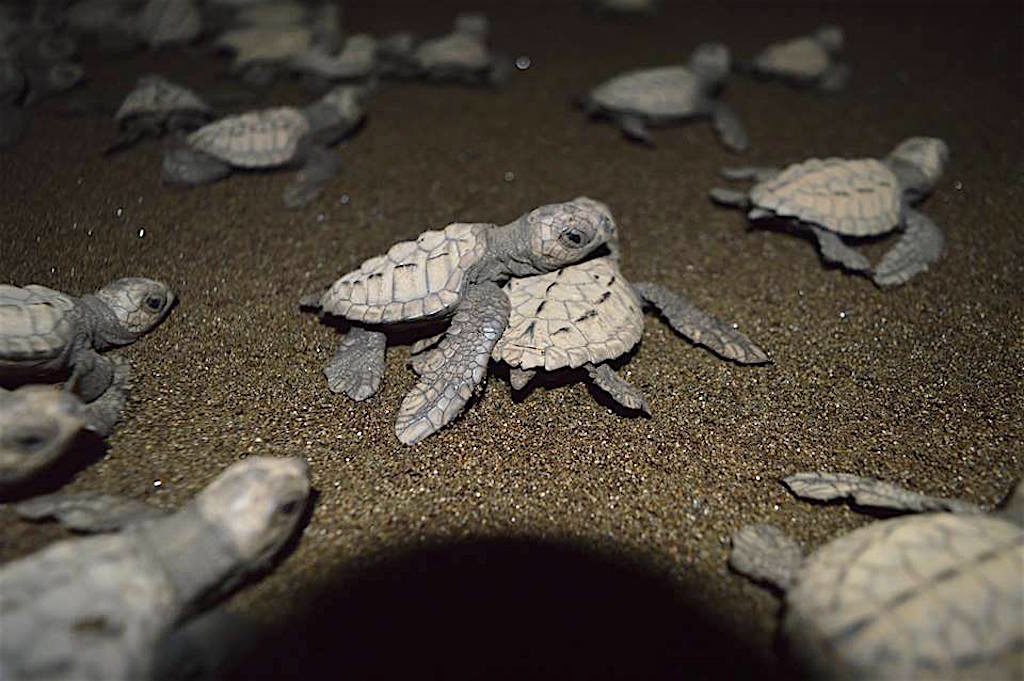
Releasing turtles, photo courtesy of Mama Orbe Eco Hostel
There’s something both joyous and daunting about seeing animals no bigger than your pinky finger scramble along the beach to meet the biggest body of water in the world. But this is one of the aspects that makes the experience so memorable.

Releasing turtles, photo courtesy of Mama Orbe Eco Hostel
There are options to stay at the Mama Orbe Eco Farm. And I would highly recommend this. The setting is basic. You won’t find electricity or a modern plumbing system here. But what you will find is natural beauty and hospitality that is unrivaled, none more so than from the host herself, the eponymous Mama Orbe.
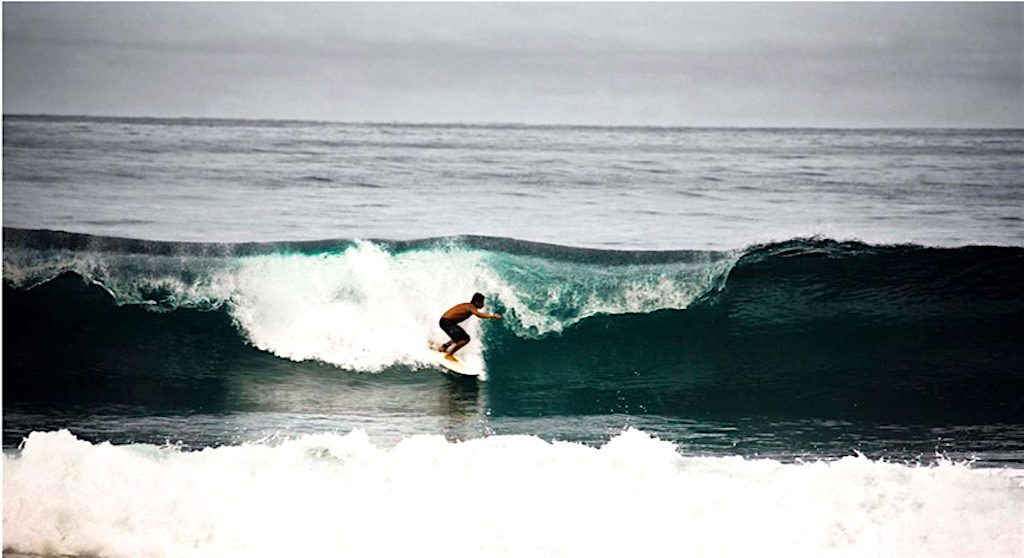
Pacific coast surfing, photo courtesy of Humpback Turtle Hostel
5. Pacific Coast – Top Things to Do: Surfing
The waves on the Pacific coast are not for the light hearted. While this may be a challenging place for beginners, more experienced surfers will find the biggest waves in Colombia exhilarating and a must-do.
Surf boards can be rented at Humpback Turtle Hostel in El Valle. Or if you venture towards Nuquí you can rent from El Cantil Lodge and lessons are also offered here.
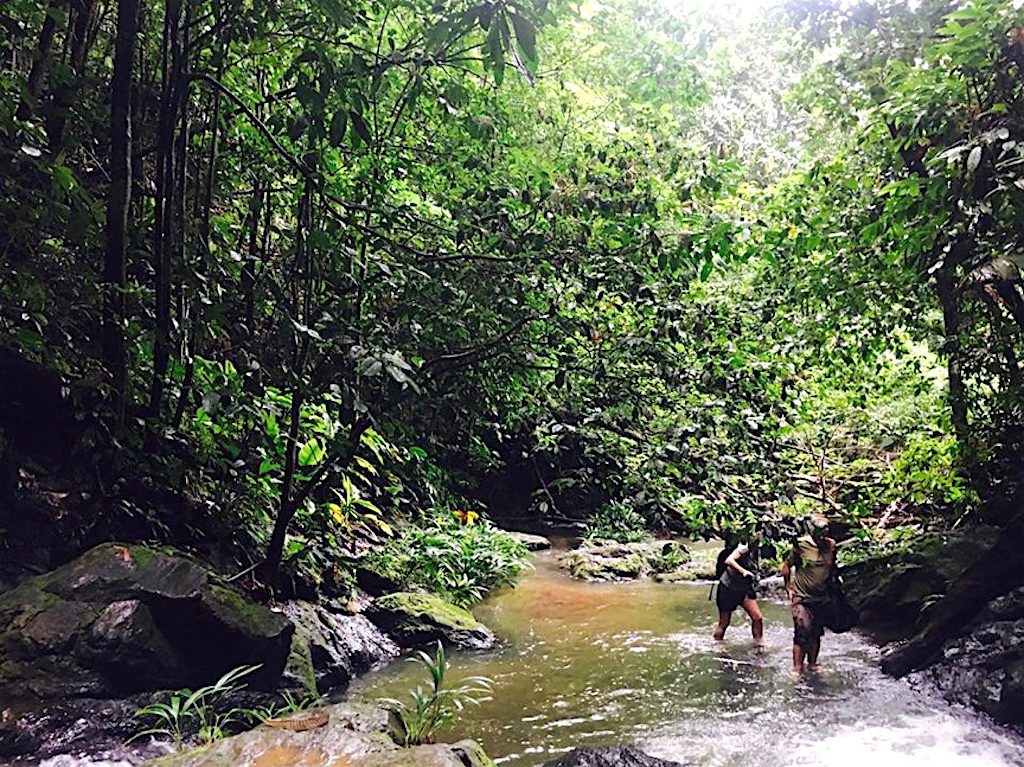
Hiking in Jardín Botanico del Pacifico, photo by Hannah Nia
6. Pacific Coast – Top Things to Do: Jardín Botanico del Pacifico
See it before it’s gone. The Jardín Botanico del Pacifico is in danger of deforestation, leaving it’s some 800+ bird species with an uncertain future.
The forest is accessible from Bahía Solano by walking, which takes roughly an hour and must be done at low tide. Once there, it’s possible to hire a local Emberá guide, who will show you the various flora and fauna endemic to the region.
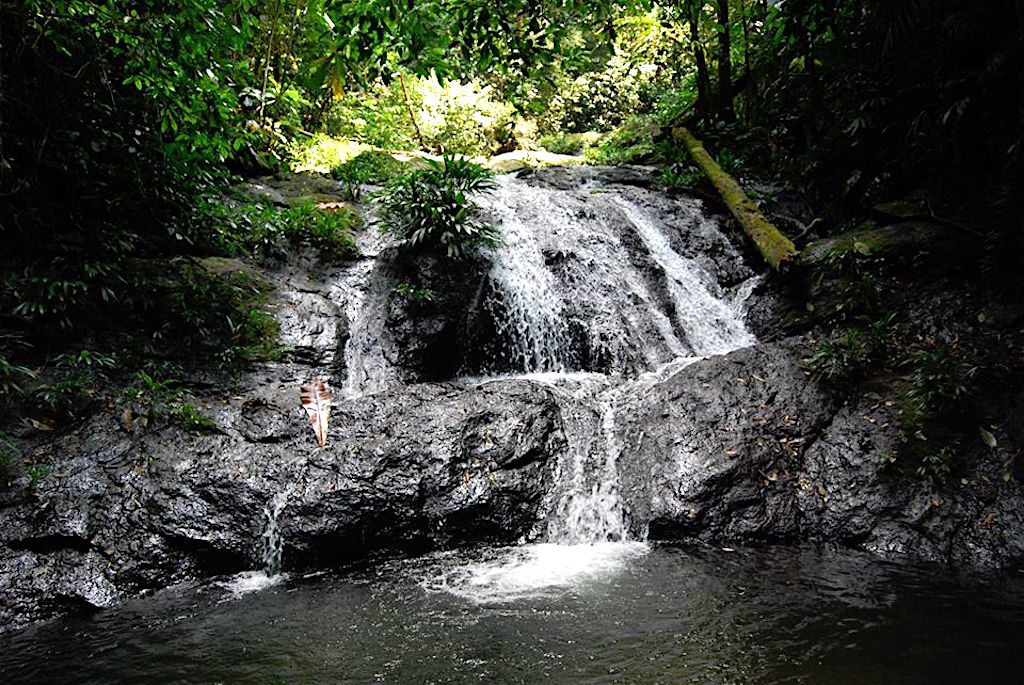
Utría National Park, photo courtesy of Humpback Turtle Hostel
7. Pacific Coast – Top Things to Do: Utría National Park
A trip to the Pacific coast wouldn’t be complete without exploring the rich natural environment. Utría National Park (Parque Nacional Natural Utría) is a place where the rainforest meets the sea. This is an area where the near constant rainfall gives rise to lush jungles, rivers and waterfalls that line the dark sand beaches.
There are countless hikes to do around here. Some which may have you wading through the ocean and using every limb to climb through the dense jungle. But all are beautiful, isolated and free from crowds.
Utría National Park, famous for its mangroves, should be on your list if your objective is to spot as much flora and fauna as possible. Amongst the trees, you can spot birds of paradise, tree frogs and huge butterflies.
Be careful though – jaguars are another inhabitant of these forests. Although their shyness means that they rarely come into contact with their human neighbors.
The 2018 cost to enter Utría National Park is 46,500 pesos for foreigners who aren’t residents of Colombia, 17,500 pesos for Colombian adults or foreigner residents of Colombia and 9,500 pesos for Colombians or foreigner residents aged 5 to 25.

A bird watchers paradise with birds of all shapes and colors, photo courtesy of Mama Orbe Eco Hostel
8. Pacific Coast – Top Things to Do: Bird Watching
Choco, the province where Bahía Solano, Nuquí and Buenaventura are located, is one of the most biodiverse regions for birds in the world.
Here, you can spot everything from hummingbirds to vultures, kingfishers to parrots, and birds of paradise of every shape and color. Make sure to bring your binoculars.

Poison dart frog, photo by Roisin Mulligan
9. Pacific Coast – Top Things to Do: Spotting Poison Dart Frogs
Whales might steal the spotlight in terms of animal encounters here, but there is something to be said for the deadly poison dart frogs which call Chocó their home.
These tiny amphibians are not to be trifled with. The skin of one frog can release a chemical 200 times more potent than morphine. But they are heavily endangered, which means you have to be extraordinarily lucky (or unlucky) to come across one.

A typical meal on the Pacific coast, photo by Roisin Mulligan
10. Pacific Coast – Top Things to Do: Experiencing the Local Life
Being on the Pacific coast is a lot different to being somewhere like Cartagena or Santa Marta. There is no Internet in most places, and no phone signal in many places, which means this is the perfect place to disconnect and live like a local.
The food is similarly basic. You won’t see a menu for your entire stay, because the menu is always the same; fish, coconut rice, patacones, avocado, usually served with some kind of soup for starters.
There are bakeries in the towns where you can find more variety, serving the usual eggs for breakfast, arepas and salchipapas (French fries with bits of cut up sausages and sauce). Tranquilo. This is not a trip for haute cuisine, but rather a chance to appreciate the beauty in simplicity.
But of course, we are still in Colombia, which means the night life still ranks highly. The pueblo of El Valle regularly hosts local talent shows, where the hours disappear in a flurry of dancing, laughing and rum.
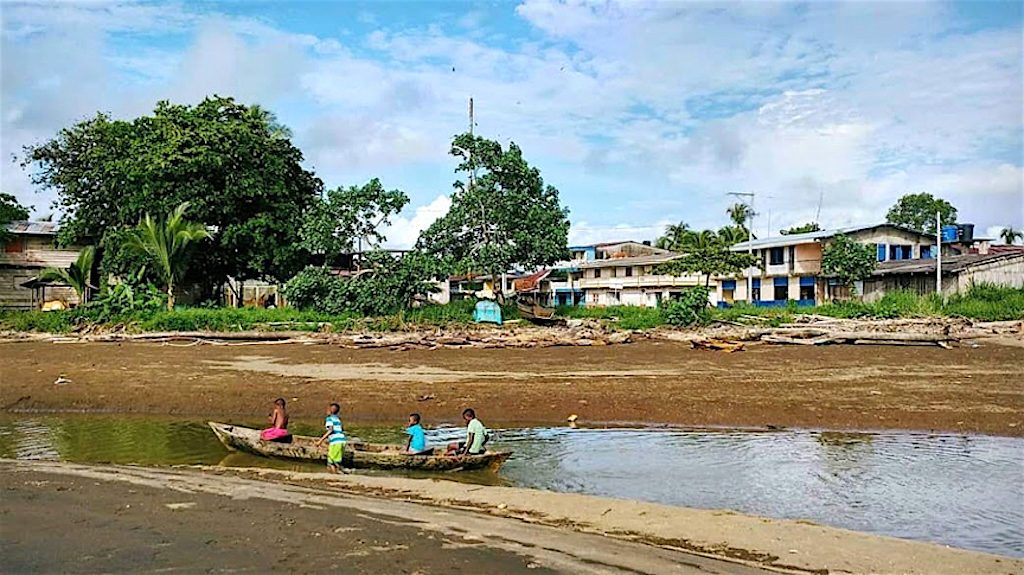
Local communities
11. Pacific Coast – Top Things to Do: Visit the Local Communities
The Emberá and the less populous Waunana can be found here. Both are of afro-Caribbean origin, and are friendly and welcoming to the tourists who grace their shores every year. It is possible to take a tour to see how the Emberá live, taking in how intertwined the culture is with their coastal environment.
The Emberá people consider boats, but especially canoes, an important part of their traditions. In local mythology, boats could talk, and people were even buried in the canoes they used in life.

Waterfall near Juribirá, photo by Roisin Mulligan
12. Pacific Coast – Top Things to Do: Jurubirá
Juribirá is a tiny settlement of 500 people, about 30 minutes’ boat ride by lancha from Nuquí. You can take a dip in the natural hot springs there. In addition, you can take another quick lancha ride to Playa Blanca which prides itself on being the only white sand beach in the area.
Locals often talk of the quiet magic of Jurubirá. And it is hard not to be taken with this beautifully remote spot.
How to Get to the Colombia’s Pacific Coast
There are two airports serving the central Pacific coast in Bahía Solano and Nuquí. In terms of getting there, your best bet is normally to fly with Satena. Satena typically offers the quickest routes and the best prices.
From Medellín, Satena flies from the local Olaya Herrera Airport direct and non-stop to both Bahía Solano and Nuquí. ADA also flies from Olaya Herrera Airport non-stop to Bahía Solano. And, from Bogotá, Satena flies to both Bahía Solano or Nuquí.
From Cali, it’s 2-3 hours by road to the southern Pacific coast port city of Buenaventura. But there are no roads to get to Bahía Solano and Nuquí from Buenaventura.
In addition, the port city of Buenaventura is not as interesting to foreign tourists compared to the coastal towns of Bahía Solano and Nuquí on the Pacific coast. So, we recommend flying directly to Bahía Solano or Nuquí. And we didn’t include any things to do in Buenaventura in this article.
Insider tip: Bring your rain gear! Chocó is one of the rainiest regions in the world. And any plans you make might be spoiled by a sudden thunderstorm.
Sunscreen is also important, especially if you’re planning to spend long periods on the open water looking for whales. Also, keep in mind the tap water isn’t considered safe to drink.

Room in Humpback Turtle Hostel, photo courtesy of Humpback Turtle Hostel
Where to Stay: Pacific Coast
If planning to stay in El Valle, which seems to be quite popular among first-timers, the Humpback Turtle hostel is recommended as a place to get your bearings. There are other hotels and hostels which offer better rooms and rates, but that can be done once you arrive, as the majority don’t have websites or contact details.
Upon arrival in Bahía Solano, there will be countless tuk tuks and taxis ready to take you exactly to where you need to go. And the price hovers around the 15,000 pesos mark but you can negotiate.
The largest hotel in the Bahía Solano area is Hotel Balboa Plaza, with large but dated rooms and it has a large pool. And probably the most luxurious eco-resort in the nearby area is El Almejai, which has cabins with electricity. For the more intrepid traveller, Mama Orbe Hostel and Eco Farm is a great place to unwind and disconnect but with no electricity or modern plumbing.
In Nuquí, most of the hotels are clustered at the northern part of town near the beach. For example, Vientos de Yubarta is a decent small hotel along the beach with some nice bamboo and wood rooms. And Hotel Nuquí Mar is another small hotel located near the beach and next to the military base, which has a nice suite on the top floor with a private balcony.
All that’s left to do is bring a book and find a hammock. And enjoy the adventures in this little-known part of Colombia.
Top Things to See and Do in Colombia
Colombia’s Pacific coast is one of the most beautiful places in Colombia.
On the Medellin Guru website, we have been looking at some of the most beautiful places in Colombia in a series of top things to see and do in Colombia. This is due to many readers asking about several of these things to do in Colombia.
We have looked at 20 of the top things to see and do in Colombia, in alphabetical order:
- Caño Cristales – the most beautiful river in Colombia, which has also been called the most beautiful river in the world by some people.
- Carnival in Barranquilla – the second largest carnival in the world.
- Cartagena – Oozing history, romance and sun-drenched beaches, the allure of historical Cartagena is hard to resist.
- Ciudad Perdida – the site of an ancient city in Colombia that is older than Machu Picchu in Peru.
- Colombia’s Pacific coast – often overlooked by tourists visiting Colombia but offering untamed nature and undiscovered beauty that is off the beaten path for most foreign tourists.
- Desierto de la Tatacoa – the second largest arid zone in Colombia is Tatacoa Desert, which has surreal desert landscapes and some of the best stargazing in Colombia.
- Guatapé – a picturesque pueblo near Medellín known for its huge rock and lake. And it’s likely the most visited pueblo in Colombia by foreigners.
- La Guajira Peninsula – one of the most visually stunning places in South America, which is located on the northern tip of Colombia where the desert meets the sea.
- Las Lajas Sanctuary – the most beautiful church in Colombia, which has also been called the most beautiful church in the world.
- Medellín’s Christmas lights – Medellín’s annual world-class Christmas lights known as Alumbrados Navideños.
- Medellín’s Feria de Las Flores – Medellín’s world-famous flower festival each year.
- Parque Nacional Natural Los Nevados – a popular national park in Colombia located in the heart of the Colombian coffee region.
- Parque Tayrona – known for its beautiful beaches and the world’s highest coastal mountain range.
- Popayán – a colonial gem in Colombia best known for its white buildings and churches, it’s a city off the beaten path for foreign tourists but is definitely worth visiting.
- Rio Claro Nature Reserve – located about three hours from Medellín, Rio Claro is the perfect place to unplug from hectic daily life and enjoy a picturesque crystal-clear river, canyon and tropical rainforest.
- Salento and the Cocora Valley – Salento is a picturesque pueblo in Colombia’s coffee region and the nearby Cocora Valley is one of the most striking landscapes found in Colombia.
- San Agustín Archaeological Park – the largest group of pre-Columbian monuments and megalithic statues in South America and is a UNESCO World Heritage Site.
- San Andrés – Colombia’s Caribbean island which is a UNESCO World Biosphere Reserve featuring many beaches, islets and coral reefs that are filled with flora and fauna.
- San Gil – Colombia’s adventure capital that is full of things to do including white water rafting, paragliding, caving, rappelling, hiking and much more.
- San Jose del Guaviare – a hidden gem and eco-tourism location off the beaten path and offering wildlife watching, jungle trekking and delving into Colombia’s prehistoric past.
Also, we included the Pacific coast of Colombia in our list of the top 20 tourist attractions in Colombia.
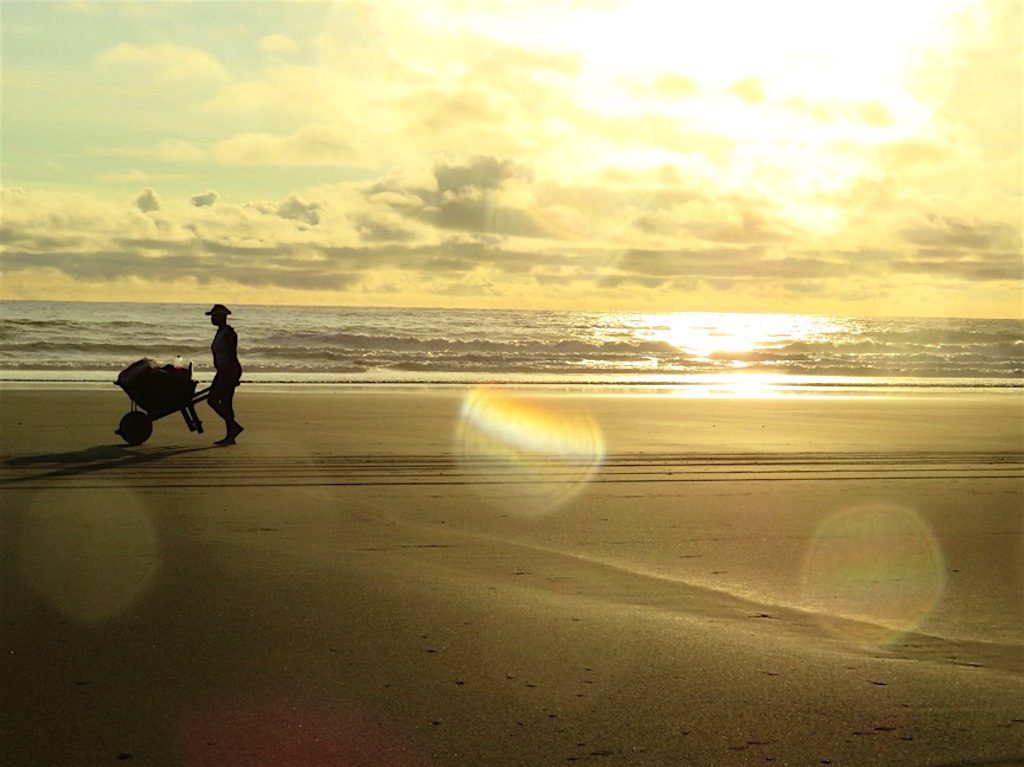
Colombia’s Pacific Coast, photo by Roisin Mulligan

Colombia’s Pacific Coast, photo by Roisin Mulligan
The Bottom Line: Colombia’s Pacific Coast
There are not many destinations in Colombia as ruggedly spectacular as the Pacific coast of Colombia. But don’t go expecting to find the luxurious accommodations you can find on the Caribbean coast of Colombia. But there are several comfortable eco-resorts/hotels.
The bottom line is that Pacific coast of Colombia is off the beaten path for most foreign tourists. So, the few that do venture to this little-visited area of Colombia will find unspoiled beaches, wild jungles, majestic whales and people that are unforgettable.
Sign up for the Free Medellin Guru Newsletter – You can see all of the previous Medellin Guru weekly email newsletters and sign up here.

